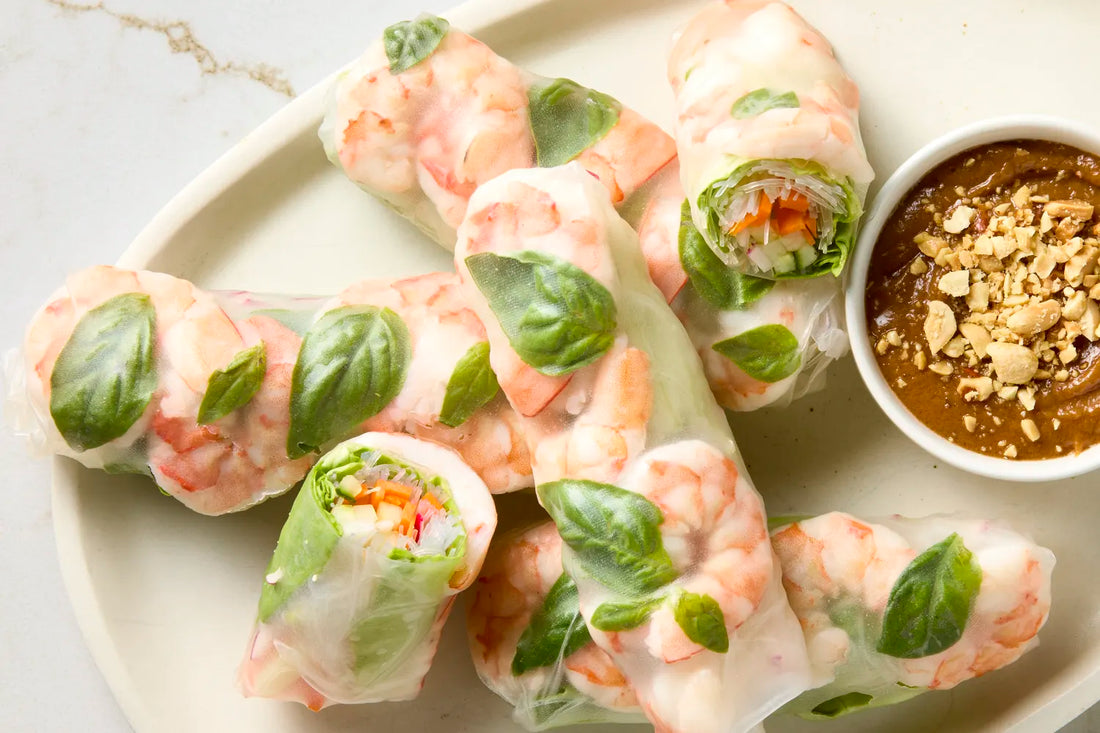Rice paper, also known as spring roll wrappers, is a low-calorie, gluten-free food staple widely used in healthy snacks and Asian cuisine. Whether you are counting calories, planning a balanced diet, or looking for lightweight meal options, understanding rice paper nutrition is essential. Each sheet provides a low-fat, easy-to-digest alternative to traditional wraps, making it ideal for weight management or healthy eating plans. In this guide, you will learn exactly how many calories are in rice paper, discover nutrition facts, and get practical tips to enjoy spring rolls without compromising your diet goals.
How Many Calories Are in Rice Paper?
On average, one rice paper sheet (about 8 grams) contains:
| Nutrient | Amount per sheet (8g) |
|---|---|
| Calories | 30 kcal |
| Carbohydrates | 7 g |
| Protein | 0.5 g |
| Fat | 0 g |
| Fiber | 0.3 g |
| Sugar | 0 g |
As you can see, a single rice paper sheet is very light, virtually fat-free, and extremely low in calories—making it ideal for snacks or weight management. This is why many people choose rice paper as a substitute for bread or tortillas in wraps and spring rolls.

Rice Paper Nutrition Overview
Rice paper is not only low-calorie but also provides:
-
Easily digestible carbohydrates: providing quick energy.
-
Gluten-free: suitable for people with gluten intolerance or those following a healthy diet.
-
Calorie control support: each sheet is light, allowing you to add plenty of vegetables and protein without exceeding your daily calorie needs.
Comparison with other foods:
| Food | Calories per 1 serving |
|---|---|
| Rice paper (1 sheet) | 30 kcal |
| Wheat tortilla (1 small) | 90 kcal |
| White bread (1 slice) | 70 kcal |
From this table, you can see that rice paper is an extremely low-calorie option compared to other wraps, especially when paired with vegetables and lean proteins in spring rolls.
Portion Sizes & Calories in Spring Rolls
The calories in a spring roll vary depending on the filling:
- Vegetable spring roll: ~40–50 kcal per roll
- Shrimp & vegetable spring roll: ~60–80 kcal per roll
- Pork & vegetable spring roll: ~80–100 kcal per roll
Tips to keep calories low:
- Use plenty of vegetables and less vermicelli noodles.
- Choose lean proteins: shrimp, chicken, tofu.
- Limit sauces high in sugar or mayonnaise.
With these preparation methods, you can enjoy delicious spring rolls without exceeding your daily calorie requirements.
Rice Paper for a Healthy Diet
Rice paper is very flexible for a healthy diet. You can try:
- Summer rolls: fresh vegetables + steamed shrimp + herbs.
- Vegetable wraps: filled with vegetables, tofu, and low-sugar sauces.
- Protein-packed rolls: with grilled chicken or lean fish.
Benefits of using rice paper:
- Easy calorie control
- Supports weight loss due to low fat content
- Encourages more vegetables, increasing fiber intake
- Versatile recipes from traditional spring rolls to quick healthy snacks
Frequently Asked Questions
1. Is rice paper gluten-free?
Yes, rice paper is made from rice flour and water, containing no gluten. It is suitable for gluten-free diets.
2. Can I eat rice paper on a diet?
Absolutely. Rice paper is low-calorie, and you can enjoy it with vegetables and protein without worrying about weight gain.
3. How to reduce calories in spring rolls?
- Use more vegetables and less vermicelli noodles
- Choose lean proteins: shrimp, chicken, tofu
- Limit high-sugar sauces
4. How many calories are in 2 sheets of rice paper?
One sheet contains ~30 kcal, so two sheets are ~60 kcal—still very light for a low-calorie diet.

Conclusion
Rice paper is an excellent choice for a healthy diet, with low calories, gluten-free, and easy to combine with various fillings. Understanding the calories and nutritional content helps you plan meals, manage weight, or simply enjoy tasty spring rolls in a healthy way.
Try vegetable or shrimp rolls to enjoy delicious flavors while keeping calorie intake in check.







